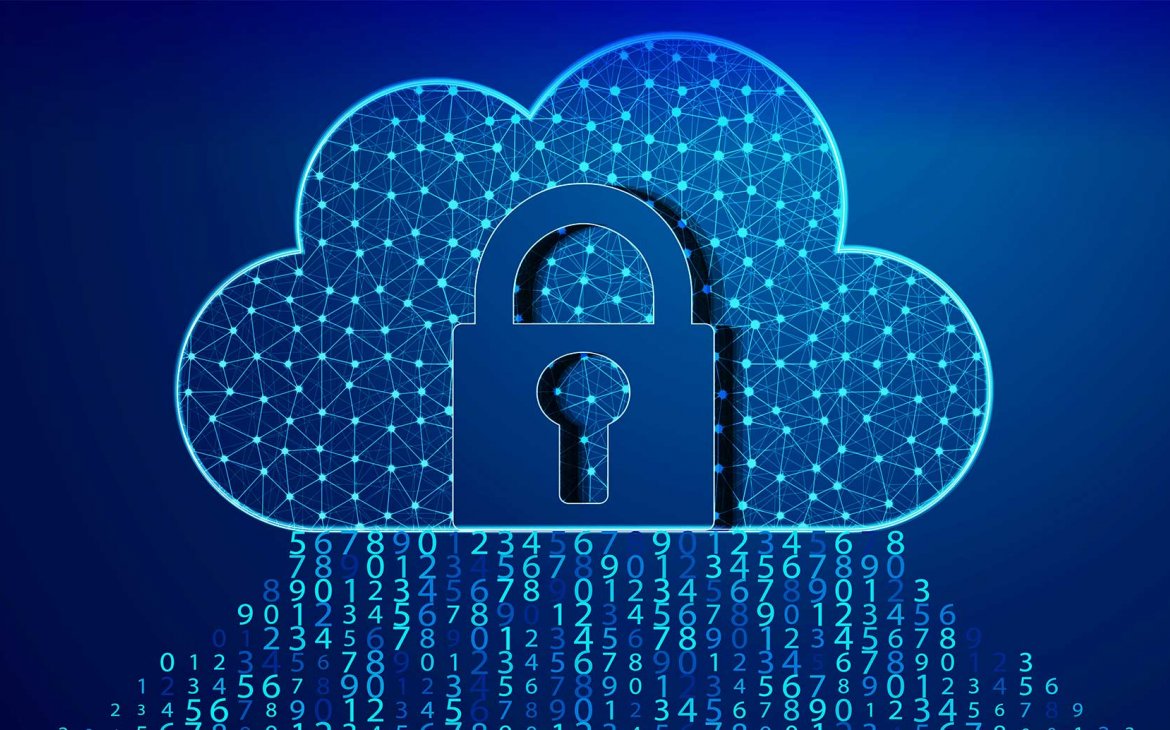The Imperative of Robust Cybersecurity Measures in Cloud Environments
Strengthening cybersecurity in cloud environments has become increasingly critical as businesses continue to adopt cloud services for their operations. The growing reliance on cloud infrastructure has attracted cybercriminals, leading to a surge in cyber-attacks targeting cloud-based systems. Consequently, implementing robust security measures to protect sensitive data and systems is no longer optional but a necessity.

Understanding Cloud Security: Key Concepts and Challenges
Strengthening cybersecurity in cloud environments requires a solid understanding of fundamental cloud security concepts and common challenges. One critical concept is the shared responsibility model, which dictates that both the cloud service provider (CSP) and the customer share the responsibility for maintaining security.
Data encryption is another essential concept in cloud security. It involves converting plaintext data into a coded format, which can only be accessed with a decryption key. Encryption is crucial for protecting sensitive data, both in transit and at rest, and can help organizations meet compliance requirements.
Access control is a security measure that restricts access to authorized users only. Best practices for implementing strong access control policies include multi-factor authentication, least privilege access, and regular audits. Multi-factor authentication requires users to provide at least two forms of identification before granting access, while least privilege access ensures that users only have access to the resources they need to perform their job functions.
Despite the many benefits of cloud computing, there are also several challenges and vulnerabilities that organizations must be aware of. These include data breaches, data loss, account hijacking, insider threats, insecure APIs, and denial of service attacks. To mitigate these risks, organizations must implement robust security measures and follow best practices for cloud security.

Implementing Strong Access Control Policies
Access control is a fundamental aspect of strengthening cybersecurity in cloud environments. Implementing strong access control policies can help organizations protect sensitive data and systems from unauthorized access, both from external threats and insider threats.
Multi-factor authentication (MFA) is a critical best practice for implementing strong access control policies. MFA requires users to provide at least two forms of identification before granting access to a system or application. This additional layer of security can help prevent unauthorized access, even if a user’s password is compromised.
Least privilege access is another essential concept in access control. This principle ensures that users only have access to the resources they need to perform their job functions. By limiting access to only what is necessary, organizations can reduce the risk of data breaches and other security incidents.
Regular audits are also crucial for maintaining strong access control policies. Regular audits can help organizations identify potential vulnerabilities and ensure that access controls are properly implemented and configured. Audits can also help organizations detect and respond to suspicious activity or unauthorized access attempts.
In addition to these best practices, organizations should also consider implementing role-based access control (RBAC) and attribute-based access control (ABAC) to further strengthen their access control policies. RBAC assigns access rights based on a user’s role within the organization, while ABAC uses attributes such as user location, time of day, and device type to determine access rights.
How to Secure Data in Transit and at Rest
Securing data is a critical aspect of strengthening cybersecurity in cloud environments. Organizations must ensure that their data is protected both in transit and at rest to prevent unauthorized access and data breaches.
Data encryption is a fundamental technique for securing data in transit and at rest. Encryption converts data into a code that can only be accessed with a decryption key. By encrypting data, organizations can prevent unauthorized users from accessing sensitive information, even if the data is intercepted during transmission.
Tokenization is another technique for securing data at rest. Tokenization replaces sensitive data with non-sensitive tokens, making it difficult for unauthorized users to access the original data. This technique is particularly useful for protecting sensitive information such as credit card numbers and social security numbers.
Secure key management is also essential for securing data in transit and at rest. Organizations must ensure that encryption keys are stored securely and are only accessible to authorized users. This can be achieved through the use of hardware security modules (HSMs) or cloud-based key management services.
In addition to these techniques, organizations should also consider implementing network segmentation and microsegmentation to further secure their data. Network segmentation involves dividing a network into smaller segments to limit the spread of a security breach. Microsegmentation takes this a step further by dividing a network into even smaller segments, making it more difficult for unauthorized users to move laterally within the network.
Organizations should also consider implementing intrusion detection systems (IDS) and intrusion prevention systems (IPS) to detect and prevent unauthorized access to their data. IDS and IPS systems monitor network traffic and alert security teams to any suspicious activity or policy violations.

Leveraging Security Tools and Services in Cloud Environments
Strengthening cybersecurity in cloud environments requires organizations to leverage various security tools and services. These tools can help organizations detect and prevent security threats, monitor network activity, and ensure compliance with industry regulations.
Intrusion detection systems (IDS) and intrusion prevention systems (IPS) are essential security tools for cloud environments. IDS and IPS systems monitor network traffic and alert security teams to any suspicious activity or policy violations. These systems can also prevent unauthorized access to the network by blocking suspicious traffic.
Security information and event management (SIEM) tools are another critical component of cloud security. SIEM tools collect and analyze security-related data from various sources, including network devices, servers, and applications. By analyzing this data, SIEM tools can identify potential security threats and provide security teams with real-time alerts.
Cloud access security brokers (CASBs) are security tools that provide visibility and control over cloud applications and data. CASBs can detect unauthorized access to cloud applications, prevent data exfiltration, and ensure compliance with data protection regulations.
Organizations should also consider implementing security automation and orchestration tools. These tools can help security teams respond to security incidents more quickly and efficiently by automating repetitive tasks and providing real-time threat intelligence.
In addition to these tools, organizations should also consider implementing cloud-native security services. Cloud-native security services are built into the cloud platform and provide organizations with additional security features, such as network segmentation, microsegmentation, and security groups.
When selecting security tools and services for cloud environments, organizations should consider factors such as ease of use, scalability, and integration with existing security systems. Organizations should also ensure that their security tools and services are compliant with industry regulations and standards.
Designing a Comprehensive Cloud Security Strategy
Strengthening cybersecurity in cloud environments requires a well-designed security strategy. A comprehensive cloud security strategy includes several key steps, including risk assessment, policy development, and continuous monitoring and improvement.
The first step in designing a comprehensive cloud security strategy is to conduct a thorough risk assessment. This assessment should identify potential security threats and vulnerabilities in the cloud environment. Organizations should also consider the impact of a security breach on their business operations and reputation.
Based on the risk assessment, organizations should develop a comprehensive cloud security policy. This policy should outline the organization’s security goals, objectives, and procedures. The policy should also include guidelines for access control, data encryption, and incident response.
Access control is a critical component of cloud security. Organizations should implement multi-factor authentication, least privilege access, and regular audits to ensure that only authorized users have access to sensitive data and systems.
Data encryption is another essential component of cloud security. Organizations should use encryption to protect data in transit and at rest. Tokenization and secure key management are also effective techniques for securing sensitive data in the cloud.
Incident response is a critical component of a comprehensive cloud security strategy. Organizations should have a well-defined incident response plan in place. This plan should outline the steps to be taken in the event of a security breach, including identifying the breach, containing the damage, and notifying affected parties.
Continuous monitoring and improvement are essential for maintaining cloud security. Organizations should regularly review their cloud security policies and procedures to ensure that they are up-to-date and effective. Organizations should also consider implementing security automation and orchestration tools to improve their incident response capabilities.
When designing a comprehensive cloud security strategy, organizations should consider factors such as compliance with industry regulations and standards, ease of use, and scalability. Organizations should also ensure that their security strategy aligns with their business objectives and goals.

The Role of Employee Training and Awareness in Cloud Security
Strengthening cybersecurity in cloud environments requires a multi-faceted approach, and employee training and awareness are critical components of any successful cloud security strategy. Employees are often the weakest link in an organization’s security posture, and cybercriminals frequently target them through phishing attacks, social engineering, and other tactics.
To maintain cloud security, organizations must prioritize employee training and awareness. This training should cover a range of topics, including phishing prevention, strong password creation, and secure data handling practices. Employees should also be trained on the organization’s cloud security policies and procedures, as well as the potential risks and threats associated with cloud computing.
Phishing prevention is a critical component of employee training. Phishing attacks are a common tactic used by cybercriminals to gain access to sensitive data and systems. Employees should be trained to recognize phishing emails and other social engineering tactics. They should also be taught to never click on links or download attachments from unknown sources.
Strong password creation is another essential component of cloud security. Employees should be trained to create strong, unique passwords for each of their accounts. They should also be encouraged to use password managers to securely store and manage their passwords. Organizations should consider implementing multi-factor authentication (MFA) to provide an additional layer of security.
Secure data handling practices are critical for maintaining cloud security. Employees should be trained to handle sensitive data securely, both in the cloud and on-premises. They should be taught to encrypt sensitive data, use secure file transfer protocols, and avoid transmitting sensitive data via email or other insecure channels.
Organizations should also provide regular reminders and updates on cloud security policies and procedures. This can help ensure that employees are aware of the latest threats and vulnerabilities and are following best practices for securing their accounts and data.
In addition to formal training, organizations should also promote a culture of security awareness. This can include regular security updates, posters, and other materials that remind employees of the importance of cloud security. Organizations can also incentivize secure behavior by recognizing and rewarding employees who follow best practices for cloud security.

Case Study: Successful Cloud Security Implementations
Strengthening cybersecurity in cloud environments is a top priority for organizations of all sizes and industries. While the challenges of cloud security are significant, there are many real-world examples of successful cloud security implementations. In this case study, we will explore some of these success stories and highlight the key strategies, tools, and best practices that contributed to their success.
One example of a successful cloud security implementation is a large financial institution that migrated its sensitive data and applications to a major cloud provider. To ensure the security of its data and systems, the organization implemented a range of security measures, including multi-factor authentication, encryption, and access controls. The organization also worked closely with the cloud provider to ensure that its security policies and procedures were aligned with industry best practices.
Another example is a healthcare provider that implemented a cloud-based electronic health record (EHR) system. To protect patient data, the organization implemented robust security measures, including data encryption, access controls, and regular security audits. The organization also provided training and awareness programs for employees to ensure that they were following best practices for secure data handling.
A third example is a manufacturing company that implemented a cloud-based supply chain management system. To secure its data and systems, the organization implemented a range of security measures, including intrusion detection systems, security information and event management (SIEM) tools, and cloud access security brokers (CASBs). The organization also worked closely with its cloud provider to ensure that its security policies and procedures were aligned with industry best practices.
These case studies highlight the importance of a comprehensive cloud security strategy that includes risk assessment, policy development, and continuous monitoring and improvement. They also demonstrate the value of working closely with cloud providers and leveraging security tools and services to enhance cloud security.
In addition to these strategies, successful cloud security implementations require a strong commitment to employee training and awareness. Employees must be trained on the organization’s cloud security policies and procedures, as well as the potential risks and threats associated with cloud computing. They must also be encouraged to follow best practices for securing their accounts and data.
In conclusion, strengthening cybersecurity in cloud environments is a complex and ongoing challenge. However, there are many real-world examples of successful cloud security implementations that demonstrate the potential for organizations to secure their data and systems in the cloud. By following best practices, leveraging security tools and services, and prioritizing employee training and awareness, organizations can enhance their cloud security and protect their sensitive data and systems.

